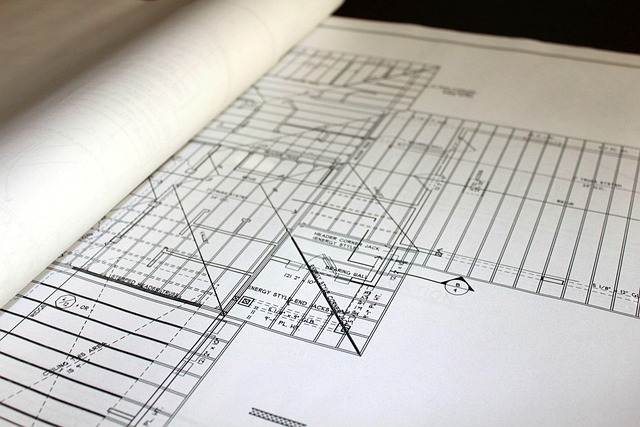Understanding your home's architecture and local climate is crucial for choosing a suitable roofing type and material. Residential Roofing Contractors specialize in guiding homeowners through this process, offering expertise from initial assessment to ongoing maintenance. They ensure structural integrity and aesthetic appeal by selecting durable materials, precise installation techniques, and regular upkeep, prolonging roof lifespan and protecting homes. Engaging these professionals is key to avoiding DIY mistakes, ensuring safety, and preserving your property's value.
Looking to upgrade or replace your home’s roofing system? Navigating the process can be daunting, but understanding the key steps and considerations ensures a solid investment. This comprehensive guide delves into the world of residential roofing system installation, from choosing the right materials for your climate to selecting trusted Residential Roofing Contractors. We break down pre-installation assessments, step-by-step installation processes, common mistakes to avoid, and essential maintenance tips to ensure your new roof’s longevity.
Understanding Your Roof: Types and Materials for Residential Structures

When it comes to residential roofing system installation, understanding your roof’s type and materials is crucial. Different architectural styles necessitate distinct roofing solutions. Residential roofs can be categorized into several types, each offering unique characteristics and benefits. For instance, pitched roofs are common in traditional homes, featuring a steep angle that allows for effective water runoff. Flat roofs, on the other hand, are popular in modern architecture, requiring specific materials to manage moisture accumulation.
Choosing the right materials is equally vital. Asphalt shingles dominate the residential roofing market due to their affordability and ease of installation. They offer a wide range of colors and styles, suiting various tastes. Metal roofing has gained popularity for its durability and low maintenance requirements. Other options include wood shakes, tile, and composite materials, each with distinct aesthetics and performance traits. Engaging reputable residential roofing contractors can guide homeowners in selecting the best fit based on their budget, climate, and desired visual appeal.
The Role of Professional Residential Roofing Contractors

When it comes to installing a residential roofing system, the role of professional contractors cannot be overstated. They bring a wealth of knowledge and expertise, ensuring that every aspect of the installation process is executed with precision and care. With access to high-quality materials and cutting-edge techniques, these specialists can transform your home’s exterior, providing not just aesthetic appeal but also vital protection against the elements.
Residential roofing contractors play a crucial role in safeguarding your investment. They meticulously evaluate your property, consider local climate conditions, and recommend suitable roofing solutions tailored to your needs. Their skilled hands ensure proper installation, from preparing the roof deck to sealing every joint, guaranteeing a durable and leak-free finish. Trusting these professionals is key to achieving a safe, reliable, and visually appealing roofing system for years to come.
Pre-Installation Assessment: Preparing Your Home for a New Roof

Before any installation begins, residential roofing contractors will conduct a thorough pre-installation assessment to ensure a smooth and successful roof replacement process. This involves a detailed inspection of your home’s current roofing system, including identifying any damages, checking the structural integrity, and evaluating the overall condition of the building. During this phase, professionals also consider factors like the age of the existing roof, local climate conditions, and energy efficiency goals.
The assessment plays a crucial role in preparing your home for the new roof, as it allows contractors to make informed decisions about materials, design, and installation techniques. It helps in tailoring the roofing solution to meet specific needs, ensuring not just a visually appealing new roof but also one that provides adequate protection against elements, improves energy efficiency, and stands the test of time.
Step-by-Step Guide to Residential Roofing System Installation

Installing a residential roofing system is a complex process that requires skill, precision, and adherence to safety standards. Here’s a simplified step-by-step guide for installing a new roof, highlighting key aspects where Residential Roofing Contractors excel:
1. Preparation: Begin by inspecting the existing roof and determining the scope of the project. Remove any debris, repair or replace damaged shingles, and ensure the structure is secure. Create a detailed plan, including material lists and measurements, to streamline the installation process.
2. Foundation & Underlayment: Laying a robust foundation is critical. Install a water-resistant underlayment membrane, ensuring it covers the entire roof deck. This layer provides an extra barrier against moisture intrusion and offers insulation. Follow local building codes for specific requirements.
3. Roof Structure Assembly: Prepare the roof trusses or frames according to engineering specifications. Secure them to the walls using structural anchors, ensuring proper alignment and stability. This step forms the skeleton of your new roofing system.
4. Shingling & Flashing: Start installing shingles from the bottom edge of the roof upwards, overlapping each course by 2-3 inches. Use roofing nails or screws to secure the shingles, following manufacturer guidelines for spacing. Install flashing around chimneys, vents, and valleys to prevent water seepage.
5. Trimming & Finishing: Once the main roof is complete, trim the excess underlayment and seal any gaps with weatherstripping. Cut and install roof vents to ensure proper ventilation, reducing heat buildup and moisture damage. Finally, clean up debris and inspect the entire system for any loose or missing components.
Choosing the Right Roofing System for Your Climate and Lifestyle

When it comes to choosing a residential roofing system, one often overlooked aspect is its suitability for your specific climate and lifestyle. Different roofing materials have varying levels of durability, insulation properties, and aesthetic appeal, all of which can be influenced by geographical location and personal preferences. For instance, regions with frequent storms or high winds might require sturdier roofs like metal or concrete tiles, while areas prone to heavy snowfall may benefit from shingles that offer better insulation.
Residential roofing contractors play a crucial role in guiding homeowners through this process. They can assess your property’s needs based on local conditions and help select materials that align with both climate demands and personal design aspirations. Whether you’re prioritizing energy efficiency, low maintenance, or a specific visual style, the right roofing system will enhance your home’s value, comfort, and longevity, ensuring you make an informed decision tailored to your unique circumstances.
Common Mistakes to Avoid During and After Installation

When it comes to residential roofing system installation, there are several common mistakes that homeowners often make, which can lead to long-term issues and additional expenses. One of the primary errors is attempting DIY installations without proper knowledge or experience. Roofing work requires specialized skills and equipment, so leaving it to unqualified individuals can result in subpar results and safety hazards. Always rely on reputable residential roofing contractors with proven expertise for a secure and durable roof.
Another mistake to avoid is neglecting regular maintenance after the installation. New roofs require care to maintain their integrity and longevity. Skipping routine inspections, cleaning, and repairs can cause minor issues to escalate into major problems. Regular upkeep ensures your roof remains in optimal condition, protecting your home from potential damage caused by weather conditions or pest infestations. Promptly addressing any concerns with your roofing system is key to avoiding costly replacements down the line.
Maintenance and Longevity: Ensuring Your Roof's Health Over Time

Regular maintenance is key to extending the lifespan of your residential roofing system, a crucial aspect often overlooked by homeowners. Professional residential roofing contractors recommend scheduling periodic inspections to identify potential issues early on. By catching problems like missing shingles, damaged flashing, or moisture intrusion before they escalate, you can prevent costly repairs and extensive roof replacements.
A well-maintained roof not only preserves its structural integrity but also ensures optimal energy efficiency. Over time, accumulations of debris, dirt, and mold can compromise the insulation and ventilation systems, leading to higher energy bills. Regular cleaning and checks for signs of wear and tear by experienced contractors can help maintain the roof’s performance, ensuring your home stays comfortable and safe for years to come.
Top Tips for Homeowners: Extending the Lifespan of Your New Roof

Extending the lifespan of your new roof is a crucial investment for any homeowner. One of the best ways to achieve this is by partnering with reputable residential roofing contractors who can provide expert installation and maintenance. Regular inspections are key; check for loose or damaged shingles, flashing issues, and signs of water intrusion. Addressing these problems promptly prevents minor repairs from turning into major, costly renovations.
Additionally, maintaining proper ventilation and ensuring your roof is free from debris like leaves and branches will go a long way in prolonging its life. Using high-quality materials recommended by the contractors and avoiding common mistakes during installation can also significantly enhance your roof’s durability.
